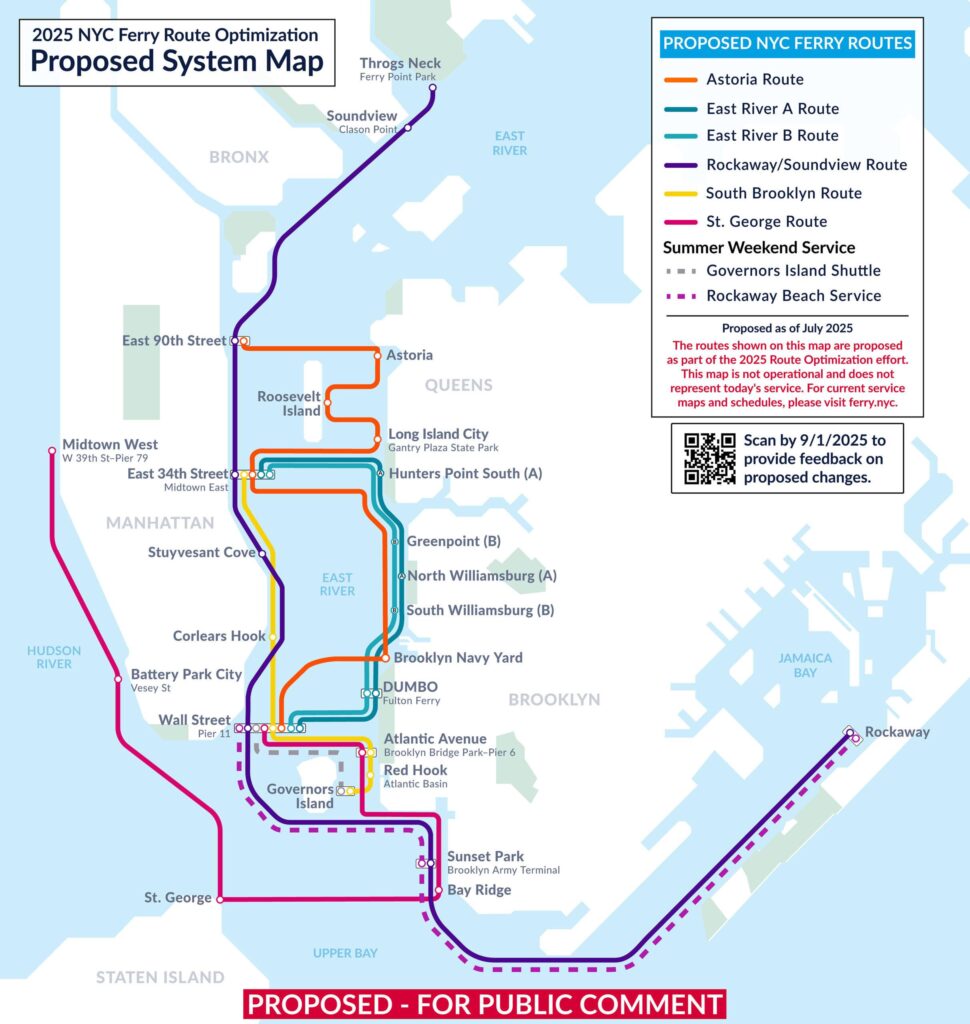Reimagining NYC Ferry: Bridging Transit Gaps in Underserved Neighborhoods
As New York City embarks on an ambitious overhaul of its ferry system, a critical issue demands urgent attention: the persistent lack of reliable water transit options in many marginalized communities. While the NYC Ferry has revitalized waterfront travel and enhanced inter-borough connections, significant swaths of the city—especially in Staten Island, the South Bronx, and parts of Queens—remain isolated from this growing network. To truly transform the ferry into an equitable and efficient mode of transportation, the redesign must focus on integrating these transit deserts, thereby fostering social inclusion, economic opportunity, and environmental sustainability.
Unequal Access: The Hidden Transit Deserts Within NYC’s Ferry Expansion
Despite the ferry system’s expansion over recent years, many neighborhoods continue to face severe transit shortages. Areas such as the southeastern Bronx—home to dense communities like Soundview and Throggs Neck—experience limited public transportation choices, resulting in longer commutes and restricted access to employment centers. Current ferry routes predominantly serve western and central waterways, leaving these eastern waterfront neighborhoods disconnected. This exclusion not only deepens existing social inequities but also stifles local economic growth and limits residents’ mobility.
To address these disparities, the ferry redesign should incorporate:
- New ferry terminals strategically placed in underserved waterfront neighborhoods to provide direct links to Manhattan and other boroughs.
- Enhanced multimodal connections that synchronize ferry schedules with buses and subways, ensuring smooth last-mile transit.
- Fare affordability aligned with MTA pricing to prevent financial barriers for low-income riders.
| Borough | Ferry Access Within 1 Mile (%) | Average Commute Duration (minutes) |
|---|---|---|
| Manhattan | 90% | 28 |
| Brooklyn | 65% | 40 |
| Queens | 42% | 45 |
| Staten Island | 20% | 53 |
| Bronx | 15% | 48 |
Spotlight on the Bronx: Tackling the Transportation Void
The Bronx’s southeastern waterfront exemplifies the challenges of transit inequity. Neighborhoods like Soundview, Throggs Neck, and City Island are densely inhabited yet suffer from limited subway access and infrequent bus service. Residents often endure lengthy commutes, with some relying solely on overcrowded buses or indirect subway routes. The current ferry network’s absence in these areas perpetuates a transportation void that hinders economic participation and quality of life.
Proposed interventions to bridge this gap include:
- Introducing new ferry docks along the Bronx River to connect residents directly to Manhattan’s job centers.
- Coordinated transit schedules to facilitate smooth transfers between ferries, buses, and subways.
- Fare parity to ensure affordability and encourage ridership among low-income populations.
| Neighborhood | Current Transit Options | Potential Ferry Benefits |
|---|---|---|
| Soundview | Bus lines, 6 train with frequent delays | Shorter commutes, direct waterfront access |
| Throggs Neck | Limited bus routes, no subway service | Expanded transit options, improved job connectivity |
| City Island | Infrequent bus service | Enhanced accessibility, tourism growth |
Optimizing Ferry Routes to Overcome Accessibility Barriers
The NYC Ferry system holds promise as a transformative transit solution for neighborhoods underserved by traditional public transportation. However, many current routes bypass communities where transit scarcity is most acute, reinforcing “transportation deserts.” By recalibrating ferry stops and expanding service coverage, the city can dramatically improve travel efficiency and connectivity for these populations.
Effective strategies to close these gaps include:
- Data-informed planning: Leveraging ridership statistics and demographic trends to pinpoint areas with the greatest need.
- Community collaboration: Engaging local residents to tailor routes that align with actual commuting patterns.
- Adaptive scheduling: Offering flexible ferry times during peak and off-peak hours to accommodate diverse work schedules.
| Neighborhood | Current Ferry Access | Proposed Route Change | Projected Ridership Growth |
|---|---|---|---|
| Soundview | No current service | New Bronx River stop | +18% |
| East New York | Outside ferry network | Extension of Brooklyn line | +22% |
| Far Rockaway | Limited ferry frequency | Increased service intervals | +14% |
Voices from the Community: Shaping an Inclusive Ferry Future
Residents from underserved neighborhoods are increasingly advocating for ferry services that prioritize fairness, affordability, and accessibility. Their insights highlight the necessity of eliminating transit deserts and ensuring that ferry routes serve as vital connectors rather than exclusive amenities.
Community-driven priorities emphasize:
- Equitable pricing: Fare structures that reflect the economic realities of diverse neighborhoods.
- Consistent and frequent service: Reliable ferry schedules during all commuting hours.
- Seamless transit integration: Coordinated connections with buses and subways to facilitate easy transfers.
- Ongoing community engagement: Continuous dialogue with local stakeholders to adapt services to evolving needs.
| Neighborhood | Existing Transit Options | Anticipated Ferry Advantages |
|---|---|---|
| South Bronx | Sparse subway lines, no ferry access | Direct waterfront transit, economic uplift |
| East New York | Limited bus service | Faster commutes, broader job market access |
| Far Rockaway | Single subway line, no ferry | Tourism growth, improved transit options |
Conclusion: Steering Toward an Inclusive and Efficient Ferry Network
As New York City advances its plans to revamp the NYC Ferry system, it is imperative that equity and accessibility guide every decision. Incorporating underserved neighborhoods into the ferry network will not only bridge longstanding transit gaps but also invigorate local economies and reduce environmental impacts by promoting public transportation. The future success of the ferry redesign hinges on its capacity to serve all New Yorkers fairly, transforming the waterways into true arteries of opportunity and connection across the city’s diverse boroughs.













